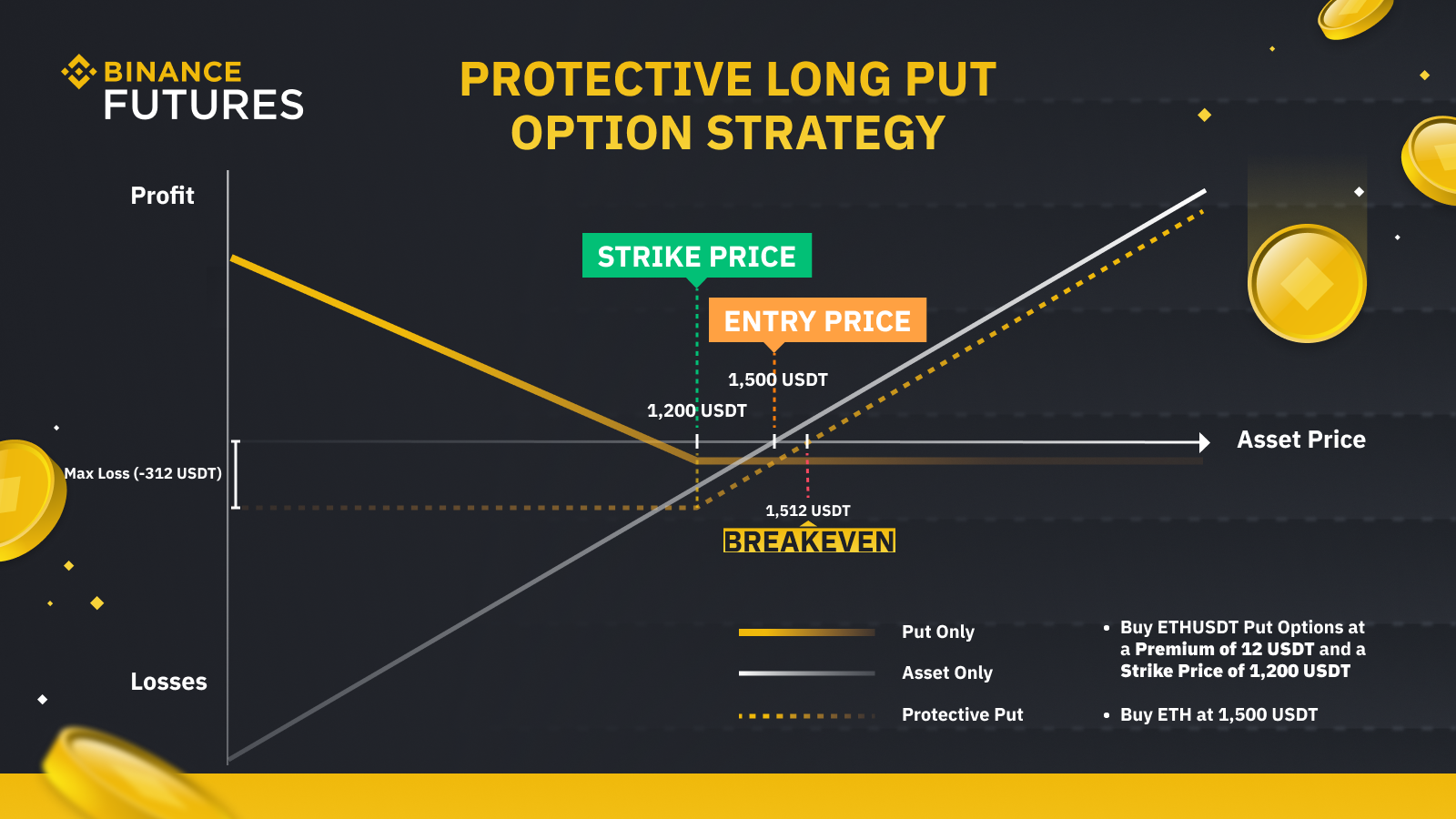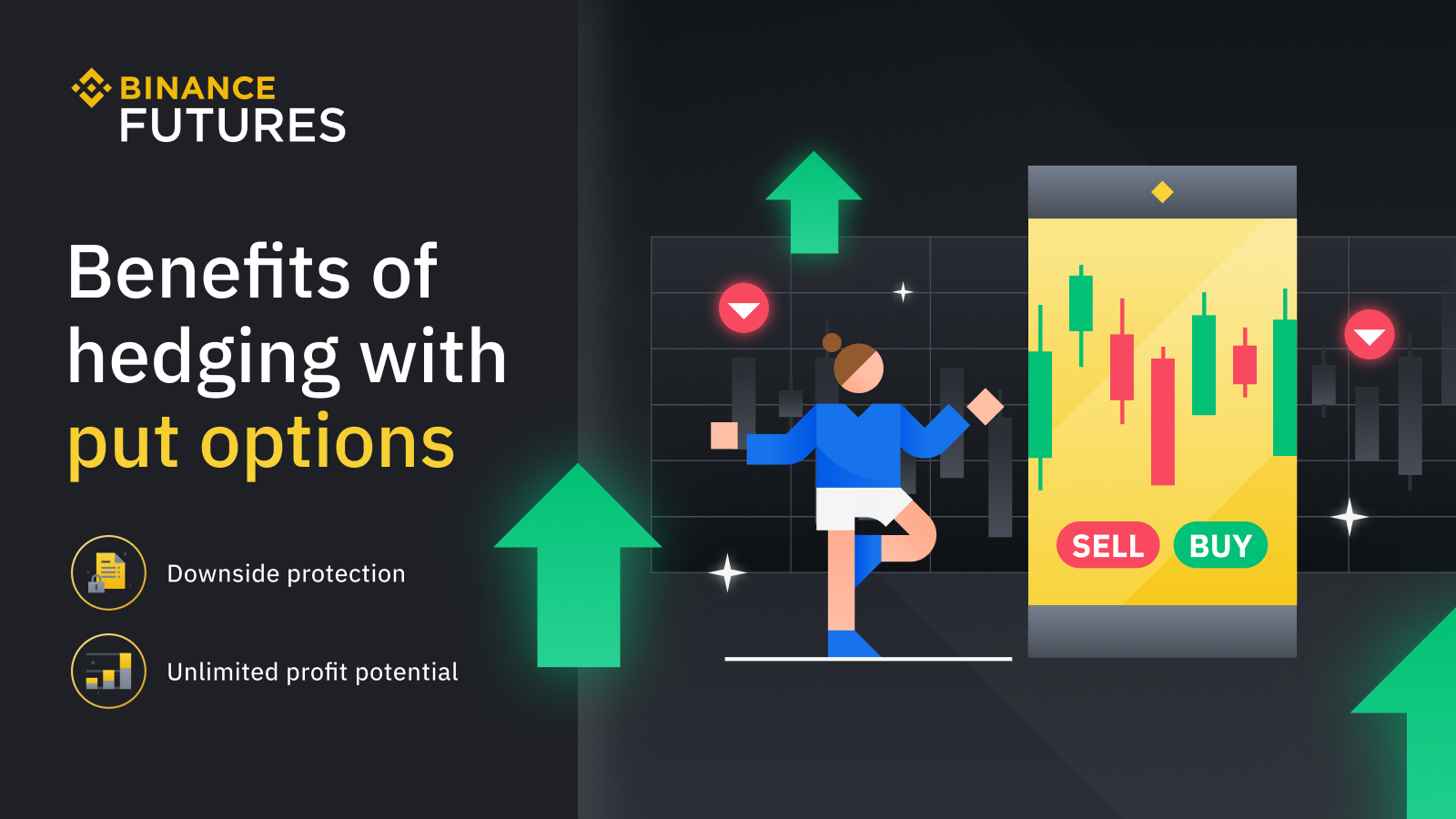How to Hedge a Long Position With a Protective Put
Main Takeaways
Crypto options contracts not only allow investors to diversify their portfolios but also to hedge risks.
Investors can use the protective put hedging strategy to protect their portfolios from market downturns.
Unlike a stop-loss, which is price sensitive and can be triggered by a sharp fluctuation in the underlying asset’s price, a protective put is only limited by time, not the crypto’s price.
Crypto options contracts allow traders and investors to diversify their portfolio and manage market risk. Learn how to hedge a long position with a protective put.
Cryptocurrency options contracts have become a popular derivative product as it gives investors another instrument to gain directional exposure to the underlying asset with leverage. But their use can be further extended to act as a risk management tool. One such strategy is to use a protective put to hedge against potential downside risk, which we will illustrate in this article.
Recap: How Do Call and Put Options Work?
Options contracts give the instrument holder the right to either buy or sell the contract at an agreed price on a predetermined date but not the obligation to do so. In return, the contract holder would need to pay a fee, known as the premium, to the option writer.
Some traders may be drawn to options contracts compared to futures contracts, as they tend to be less risky. Since options buyers have the choice not to exercise their contracts, their loss is constricted to the premium they have to pay for the contract.
The most common types of options are call and put options. Call options provide investors the right to purchase an asset at a specified price and date, and put options give them the right to sell an asset at a specified price and date.
How Does the Protective Put Options Strategy Work?
Investors with crypto assets can utilize put option contracts to protect themselves from market downturns. This hedging strategy, known as the protective put, acts as an insurance policy in case the cryptocurrency asset price declines during the life of the option.
Example of a protective put strategy
When using protective puts to hedge long positions, it's crucial to consider key factors such as the strike price, time to expiry, and premium of the put options. The strike price is the price at which the put option can be exercised, and it should be set at a level that will provide a sufficient level of protection for the portfolio.
For instance, consider a trader who buys 1 ETH at a price of 1,500 USDT. To hedge against potential losses, the trader chooses to purchase a one-month put option with a strike price of 1,200 USDT and a premium of 12 USDT.
Let’s assume that ETH experiences a sharp price decrease to 1,000 USDT following a market downturn. The trader’s put options then give them the right to sell their ETH at 1,200 USDT at expiry. So, instead of losing 500 USDT, the trader’s loss will be limited to 312 USDT (500 - 200 + 12, where 500 is the loss on spot, 200 is the profit from the long put options position, and 12 is the cost of the put option, also called premium).*
However, if the ETH price remains at 1,500 USDT at expiration, the put option will not be exercised and the trader will only lose the equivalent of the premium price, i.e., 12 USDT. The premium cost can be thought of as a one-month insurance cost in this scenario.
On the other hand, if the ETH price goes beyond the breakeven point of 1,512 USDT (ETH price paid plus option premium cost), the trader will not exercise the option and experience a gain in his ETH long. For instance, if the price of ETH rises to 2,000 USDT at expiry, the trader will have an unrealized profit of 488 USDT (500 USDT minus 12 UDST from the option premium cost)*.
*For the sake of simplicity, trading, and exercise fees are not accounted for in this example.
Benefits of hedging with put options
Downside protection: Put options provide the holder with the right, but not the obligation, to sell an underlying asset at a predetermined strike price. This means that if the market value of the asset falls below the strike price, the holder can exercise the option to sell the asset at the higher strike price and limit their losses.
Unlimited profit potential: Hedging a portfolio with a protective put option, while limiting the potential losses arising from a market downtrend, doesn’t prevent the trader from benefiting from the potential upside of their long position.
In other words, the potential profit is uncapped as the underlying asset price could rise indefinitely. The profit is just reduced by the cost of the put (premium) plus fees.
Risks of hedging with put options
Premium cost: The cost of purchasing put options, known as the premium, can be significant and eat into your potential profits.
Over-hedging: Over-hedging occurs when an investor purchases more options than needed to hedge their portfolio. This can increase the premium cost and may not be necessary to protect the portfolio from potential losses. It’s important for investors to carefully evaluate the number of options needed to hedge their portfolio and not over-hedge.
Conclusion
While most traders may choose to set a stop-loss to limit losses, a protective put may also offer an insurance against sharp market movements toward the downside. Unlike a stop-loss, which is price sensitive and can be triggered by a sharp fluctuation in the underlying asset’s price, a protective put is only limited by time, not the crypto’s price.


